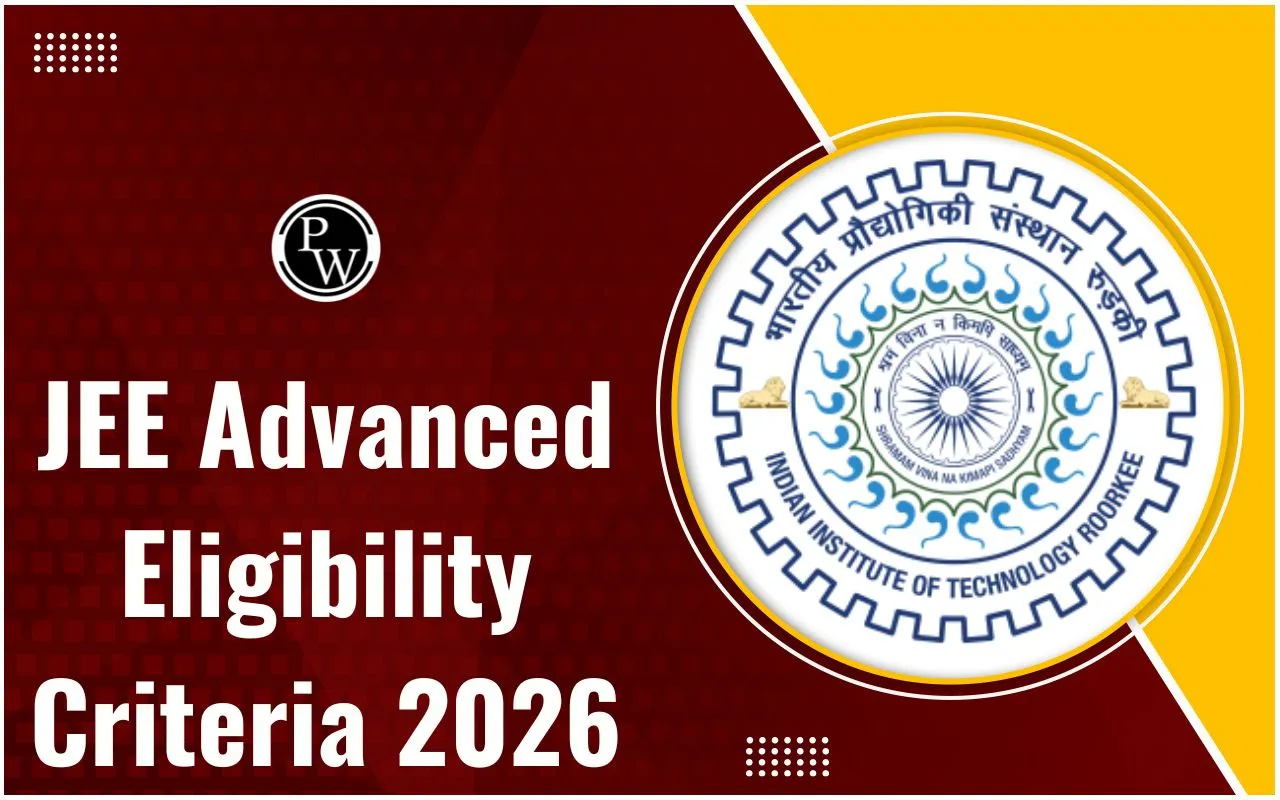
JEE Main 2025 Session 2 April 2 Exam Analysis : Conducted by NTA, the JEE Main 2025 Session 2 exams begin today, April 2nd, with the first exam being held in two shifts: morning and afternoon. The difficulty level and types of questions may vary between these shifts, making it important to assess each shift individually for a clearer understanding.
The JEE Main 2025 Session 2 April 2 Exam Analysis provides an in-depth look at the overall difficulty, topic coverage, and key observations from both the morning and afternoon shifts. The JEE Main 2025 Exam Analysis aims to help students understand the paper pattern and better prepare for the upcoming shifts.
JEE Main 2025 Session 2 April 2 Exam Analysis
For students appearing in the JEE Main 2025 Session 2 exam today, analyzing the paper after it concludes will offer valuable insights. It will help them understand the difficulty level, types of questions asked, and subject-wise weightage. This analysis can highlight areas of strength and improvement, guiding students in refining their approach for the upcoming shifts.
For future aspirants, reviewing the JEE Main 2025 April 2 exam analysis will provide a better understanding of the jee main exam pattern and key topics. Knowing the subject-wise difficulty and question trends will help them plan their preparation more effectively, allowing them to focus on important concepts for the remaining shifts of the April session.
JEE Main 2025 April 2 Shift 1 Paper Discussion
The first shift of JEE Main 2025 Session 2 was conducted from 9:00 AM to 12:00 PM and has now concluded. Students who appeared for the exam have shared that the first shift was moderate to difficult. Physics was challenging, Mathematics was lengthy, and Chemistry was relatively easier.
For a detailed analysis, PW’s subject mentors will discuss the paper, covering question trends, difficulty level, and important topics. Aspirants can join the session through the direct link given below to gain insights into their performance and receive guidance for upcoming shifts.
JEE Main 2025 April 2 Shift 2 Paper Discussion
The JEE Main 2025 Session 2 Shift 2 exam, held from 3:00 PM to 6:00 PM on April 2nd, is now complete. Based on student feedback and expert analysis:
-
Overall Difficulty: The paper was moderate, with Mathematics being the most challenging.
-
Physics: Mostly numerical-based, with a balanced distribution across Mechanics, Electrostatics, and Optics.
-
Chemistry: Rated easy, with a majority of questions directly from NCERT, focusing on Organic and Physical Chemistry.
-
Mathematics: Considered moderate to difficult, with lengthy calculations in topics like Matrices, 3D Geometry, Conic Sections, and Calculus.
The paper was well-structured, with a mix of conceptual and application-based questions. A detailed JEE Main 2025 April 2 Shift 2 paper discussion is going to be available here to help students analyze performance and prepare for upcoming exams.
JEE Main 2025 Shift-Wise Exam Analysis For Session 2
JEE Main 2025 Session 2 exams are being conducted in multiple shifts, with each shift having a unique set of questions and varying difficulty levels. A shift-wise analysis helps students understand patterns in question distribution, subject-wise difficulty, and important topics covered in each shift. JEE Main 2025 Shift-Wise Exam Analysis for Session 2 will provide insights into the overall exam trends, including the difficulty level of Physics, Chemistry, and Mathematics, types of questions asked, and how different shifts compare. It will also help students appearing in upcoming shifts prepare strategically by focusing on frequently tested concepts.
JEE Main 2025 April 2nd Shift 1 Exam Analysis Out Now
JEE Main 2025 Session 2 April 2 Shift 1 exam has concluded, and the overall difficulty level was moderate, as reported by students and experts. The paper covered Physics, Chemistry, and Mathematics, with varying levels of difficulty across subjects.
-
Physics: Considered moderately tricky, with some challenging numerical problems. Topics like Thermal Physics, Circuits, Diodes, EM Waves, and Modern Physics were covered.
-
Mathematics: Moderate but lengthy, requiring extra time for calculations. Questions from Probability, Vectors & 3D, Matrices, and Determinants were included.
-
Chemistry: Relatively easier compared to the other subjects. Focused on Mole Concepts, Catalysts, Biomolecules, and both Organic and Physical Chemistry.
The exam consisted of a total of 300-mark paper, structured as follows:
-
Section 1: 20 multiple-choice questions (MCQs) with a single correct answer.
-
Section 2: 5 numerical-based questions requiring applicants to enter a numerical answer.
Students found the difficulty level of the JEE Main 2025 April 1 shift 1 exam similar to the January session, with Physics being the most challenging and Mathematics needing careful time management.
JEE Main 2025 April 2 Shift 2 Exam Analysis Out Now
JEE Main 2025 Session 2 April 2 Shift 2 exam has concluded, and the overall difficulty level was moderate, with Mathematics being the most challenging. The paper was structured to cover Physics, Chemistry, and Mathematics, with a balanced distribution of topics.
JEE Main 2025 April 2nd Shift 2 Subject-Wise Analysis:
-
Physics: Moderate difficulty, with a mix of theoretical and numerical questions. Some were time-consuming, particularly in Mechanics, Electrostatics, and Optics. Topics like Modern Physics, Thermodynamics, Waves, and Magnetism had fewer questions, while EMI and AC were not included.
-
Chemistry: The easiest section, covering almost all chapters. Organic and Physical Chemistry had a greater share of questions, while Inorganic Chemistry had fewer. Most questions were directly from NCERT, making this section straightforward.
-
Mathematics: Moderate to difficult, with lengthy calculations. Topics such as Matrices, Permutations & Combinations, 3D Geometry, Vectors, Conic Sections, and Calculus were dominant. Some questions were both tricky and time-consuming, making this the most challenging section.
The JEE Main April 2 Shift 2 paper was well-balanced, requiring strong conceptual understanding and time management. A detailed shift-wise analysis and solutions are provided below.
Subject-Wise JEE Main 2025 Session 2 April 2nd Exam Analysis
JEE Main 2025 April 2 exam was held in two shifts, and the overall difficulty level was slightly higher than the January session. While the paper structure remained similar, students found some sections more challenging than expected.
Chemistry turned out to be the toughest subject in both shifts, followed by Mathematics, while Physics was relatively more balanced but had tricky questions. Find out the detailed Subject-Wise JEE Main 2025 Session 2 April 2nd Exam Analysis for both shifts here:
JEE Main 2025 Session 2 April 2nd Physics Analysis
Physics in both shifts featured a mix of conceptual and numerical-based questions, with a slight inclination toward Class 12 topics. Modern Physics, Optics, and Rotational Motion were among the key areas covered. Some of the topics that appeared included:
-
Shift 1:
-
Electrostatics
-
Magnetostatics
-
Kinematics
-
Thermodynamics
-
Modern Physics (2 questions)
-
Ray Optics (2 questions)
-
Units and Dimensions (2 questions)
-
Rotational Motion (2 questions)
-
Shift 2:
-
Units and Dimensions (3 questions)
-
Modern Physics (2 questions)
-
Ray Optics (2 questions)
-
Rotational Motion (2 questions)
-
Newton’s Laws of Motion (2 questions)
-
Surface Tension (Fluid Mechanics)
-
Logic Gates
-
Moment of Inertia
-
Current Electricity
-
Capacitors
-
Electromagnetic Waves
Physics had a moderate difficulty level overall, with some application-based questions requiring strong conceptual clarity.
JEE Main 2025 Session 2 April 2nd Mathematics Analysis
Mathematics was found to be slightly tricky, with questions covering a range of topics. Students faced lengthy calculations, particularly in Coordinate Geometry, Calculus, and Vectors & 3D. Important topics included:
-
Shift 1:
-
Vectors (2 questions)
-
3D Geometry (2 questions)
-
Circles
-
Arithmetic Progression (AP) and Geometric Progression (GP) from Sequences & Series
-
Binomial Theorem
-
Integration
-
Matrices and Determinants (2 questions)
-
Permutation and Combination
-
Quadratic Equations
-
Shift 2:
-
Coordinate Geometry (2-3 questions)
-
Vectors & 3D (3-4 questions)
-
Matrices
-
Integration (2-3 questions)
-
Conic Sections (2 questions)
-
Probability
-
Limits and Continuity
-
Differential Equations (2 questions)
-
Statistics
Many students found the Mathematics section to be time-consuming, with a mix of straightforward and tricky problems.
JEE Main 2025 Session 2 April 2nd Chemistry Analysis
Chemistry was the most difficult subject in both shifts. The questions were not in the usual pattern and included assertion-reason types, making it unpredictable. A higher proportion of Class 12 topics was observed, with a strong focus on Coordination Compounds, Thermodynamics, and Organic Chemistry concepts. Important questions included:
-
Shift 1:
-
Coordination Compounds (2 questions)
-
General Organic Chemistry (GOC)
-
Chemical Bonding
-
Chemical Equilibrium
-
Aromatic and Non-Aromatic Compounds
-
Shift 2:
-
Coordination Compounds (3 questions)
-
Thermodynamics (2-3 questions)
-
Amines
-
Salt Analysis
-
Hybridization
-
Chemical Equilibrium
-
P-Block Elements
-
Biomolecules (Amino Acids)
-
Solutions (2 questions)
The paper had more conceptual and applied Chemistry questions, making it tougher than previous sessions.
JEE Main 2025 April 2nd Paper Analysis: Overall Difficulty Level
-
Shift 1: Chemistry > Mathematics > Physics
-
Shift 2: Chemistry > Mathematics > Physics
Both shifts followed a similar difficulty pattern, with Chemistry being the most challenging. The Mathematics section was lengthy but manageable, while Physics had a mix of simple and tricky questions.
JEE Main 2025 April 2 Shift 1 Question Paper Analysis:
-
Overall Difficulty Level: The exam was rated as moderate to difficult by students.
-
Physics: Many students found the physics section to be challenging, with some tricky numerical questions.
-
Mathematics: The math section was described as lengthy, requiring more time for calculations.
-
Chemistry: Chemistry was relatively easier compared to the other two subjects.
The exam consisted of a 300-mark paper covering Physics, Chemistry, and Mathematics, each with two sections:
-
Section 1: 20 multiple-choice questions (MCQs) with one correct answer.
-
Section 2: 5 numerical-based questions requiring candidates to enter a numerical response.
Important Topics for JEE Main 2025 April 2 Exam With Expected Weightage
After looking at the anticipated JEE Main 2025 April 2 exam analysis, it is important to focus on the topics that are expected to have more questions. Based on past exams, here are the important topics for each subject:
Physics:
-
Mechanics may cover 25-30% of the questions and is a very important topic.
-
Electromagnetism could have 20-25% weightage, so it needs good preparation.
-
Optics is expected to hold 10-15% weightage and is of medium importance.
-
Modern Physics may also have 10-15% of the questions and should not be ignored.
-
Thermodynamics & Kinetic Theory could contribute 10%, making it a moderately important topic.
Chemistry:
-
Organic Chemistry is expected to have the most questions, around 35-40%, making it very important.
-
Physical Chemistry may have 30-35% of the questions and should be given a lot of attention.
-
Inorganic Chemistry is likely to cover 20-25%, so students should focus on it as well.
Mathematics:
-
Calculus is expected to have 30-35% of the questions and is one of the most important topics.
-
Coordinate Geometry may cover 25-30%, making it another key area.
-
Algebra is expected to contribute 15-20% of the questions and is of medium importance.
-
Vectors and 3D Geometry may have 10-15% of the questions and should be practiced well.
These weightages are based on previous JEE Main exam patterns and expected trends. Focusing on these topics can help students revise better and improve their preparation.
JEE Main 2025 April 2 Exam Analysis: Exam Structure and Number of Questions
The JEE Main 2025 April 2 exam follows the standard pattern set by the National Testing Agency (NTA). The paper is divided into three sections—Physics, Chemistry, and Mathematics—each designed to assess students’ understanding and problem-solving abilities.
JEE Main 2025 April 2 Exam Structure:
-
Total Duration: 3 hours (180 minutes)
-
Total Questions: 75 questions
-
Maximum Marks: 300 marks
-
Exam Language: Available in 13 languages
-
Mode of Exam: Computer-Based Test (CBT)
-
Question Types: Multiple-Choice Questions (MCQs) and Numerical Value Questions (NVQs)
JEE Main 2025 April 2 Subject-Wise Number of Questions:
-
Physics : 25 questions (20 MCQs + 5 NVQs), carrying 100 marks
-
Chemistry: 25 questions (20 MCQs + 5 NVQs), carrying 100 marks
-
Mathematics: 25 questions (20 MCQs + 5 NVQs), carrying 100 marks
JEE Main 2025 April 2 Marking Scheme:
-
Correct Answer (MCQs & NVQs): +4 marks
-
Incorrect Answer (MCQs only): -1 mark (negative marking applies)
- Numerical Value Questions: No negative marking
JEE Main 2025 Session 2 April 2 Exam Analysis FAQs
Q.1. Will the JEE Main 2025 April 2 exam be tough?
Q.2. Which subject is expected to be the toughest in the JEE Main 2025 April 2 exam?
Q.3. Will Shift 1 be tougher than Shift 2 in the JEE Main 2025 April 2 exam?
Q.4. What topics should I focus on for last-minute revision?
Q.5. What type of questions will be asked in the JEE Main 2025 April 2 exam?










